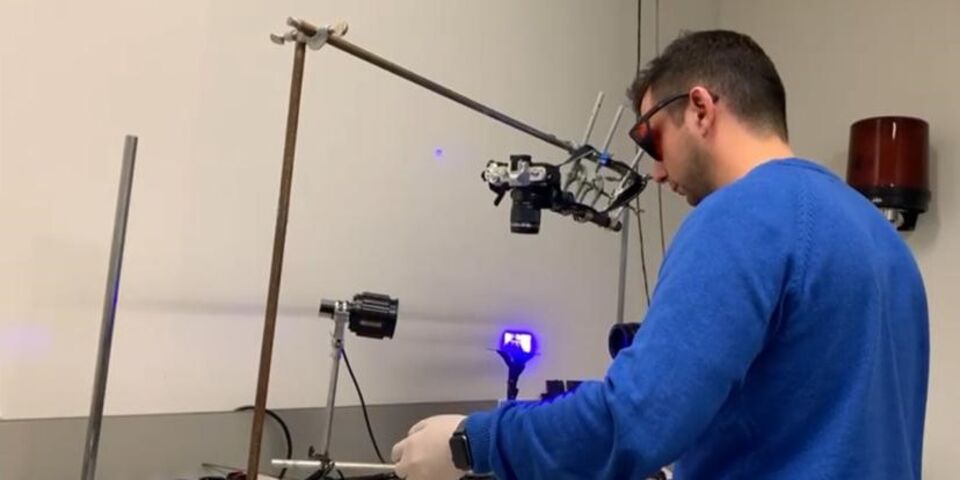Home Stretch | Moving objects straight off the printer
It seems like science fiction: a flat object issues from the 3D printer, then starts to fold itself. Albeit in a limited way, 4D printing was already possible, but now TU/e researcher Marc del Pozo Puig has developed a smart ink that responds to all kinds of environmental stimuli, for a regular desktop 3D printer. On Wednesday December 22nd, he will obtain his doctorate at the department of Chemical Engineering and Chemistry (CEC).
A flat form is placed in warm water, starts moving and within no time at all, it has become a cube. In recent years a lot of hard work has gone into developing 4D-printing, with time as the fourth dimension. You take a material that changes its form in response to environmental stimuli and you use it to print an object. It can grow or shrink, but it can also open out or close up or twist. Until now if you wanted these changes to be reversible, the only place they could occur was underwater. Handy for a self-regulating water pipeline, for example. But soon, thanks to the ‘smart ink’ developed by CEC doctoral candidate Marc del Pozo Puig, reversibility will be possible under normal conditions. Moreover, his ink is light-sensitive, which paves the way for numerous new applications.
The basis of this unique ink lies in the use of liquid crystals (LC), explains del Pozo. “At the moment, various smart materials are being used for 4D printing. As a rule, these are shape-memorypolymers or hydrogels. The disadvantage the former is that the movements are not reversible. While form changes can take place in the air, they are one-time events. Hydrogels offer the opportunity to switch the form back and forth, but then only underwater. What we didn't yet have was a more flexible material, capable of reversing its shape-shifting in various environments in response to stimuli. Now, we can adapt liquid crystals in multiple ways. We can play with not only the chemical composition, but also the molecular arrangement. Thus, materials can be designed that are responsive to humidity or temperature and whose movement can be controlled with great precision.” And by combining materials with different functionalities, printed objects can be organized to form a communicating system, says del Pozo.
Light
During his doctoral research, del Pozo studied various 4D-printing techniques and with his colleagues he produced the first 3D-LC ink that is light-sensitive. “We were already able to have materials change shape in response to water and humidity, and now we can add light to that list. By combining, for example, light and temperature you can produce objects that transform in various ways. Ideal for multitasking soft robots, whose operation this can make ever more fluid and precise. Or think of the development of a printable artificial eye with an iris diameter that responds to light in a controlled way.” Initial experiments are already showing that the ink is not toxic, but there is still much research to be done before a printed eye, heart or other body part actually finds a recipient.
For the rest, a color sensor can also be incorporated in the objects del Pozo has produced with the new ink. By way of explanation, he shares another – almost artistic – short film. A minuscule flower changes color in response to del Pozo's breathing. “This shows exactly what I mean. The flower, as small as a red blood cell, has been created with a liquid crystal ink. When I breathe on the flower, which is under a microscope, the ambient humidity changes. And with it, the color of the flower. A color change like this can be used as a sensor to register form change, a check that a certain movement has taken place.”
Printing liquid crystals
The work done by del Pozo and his colleagues is resulting in an extensive manual on 4D printing using liquid crystals – he describes structures from the micro to the macro and responses to various external stimuli, and also provides various printing techniques. But after all this fundamental research, del Pozo is now seeking a new position in which he can start using 4D printing in a more applied way. Preferably in the Netherlands, he adds with a wink. He has become accustomed to the Dutch way of doing things and the Dutch lunch break, he says, laughing. After which he signs off with a cheerful ‘doei’.




Discussion